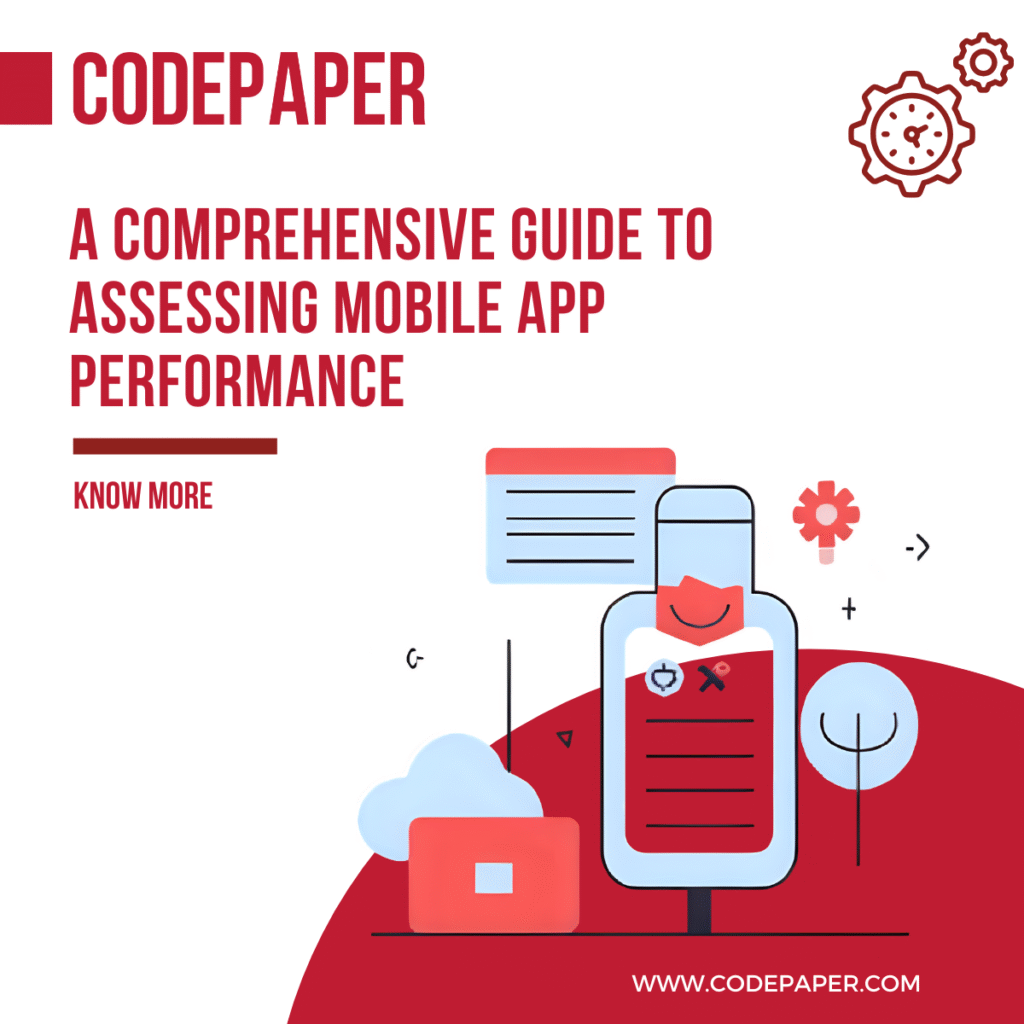Introduction:
The global mobile app industry continues to grow at a rapid pace, reaching a staggering revenue of $206.85 billion in 2022. In this saturated landscape, performance isn’t just a technical metric—it’s a business differentiator. A slow, laggy, or crash-prone app can result in poor user reviews, higher uninstall rates, and lower customer retention.
At Codepaper, we help businesses thrive in this competitive space by ensuring that their apps perform flawlessly under all conditions. This guide is a comprehensive breakdown of mobile app performance testing—covering tools, techniques, metrics, and best practices to guarantee success. Run performance audits using Lighthouse by Google.
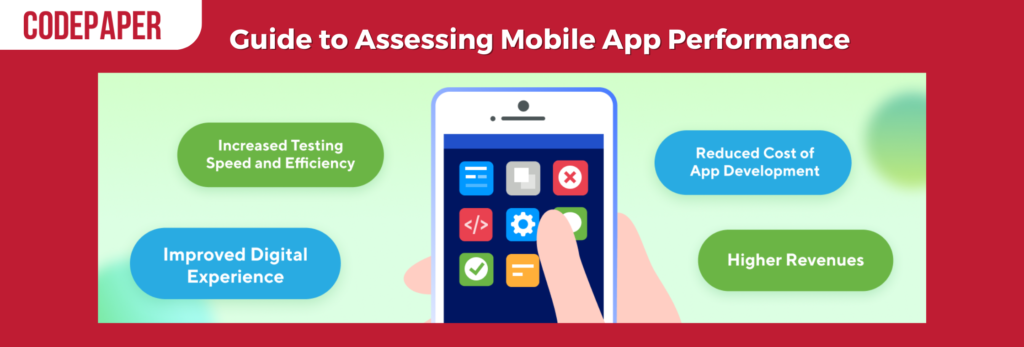
In this article, we will delve into the process of testing the performance of a mobile app, aiming to enhance app downloads and improve customer engagement for clients. You can also use GTmetrix for in-depth front-end load analysis.
What is Mobile App Performance Testing?
Mobile app performance testing is the process of evaluating an app’s behavior and responsiveness under various conditions—such as high user loads, poor network environments, or low-end devices. The goal is to ensure a seamless user experience, regardless of external factors. Hosting your backend on AWS ensures scalable and reliable performance under load.
Performance testing helps answer key questions:
Is it optimized for all supported devices?
Does the app respond quickly?
How much memory or CPU does it use?
Will it crash under load?
How does it perform over time?
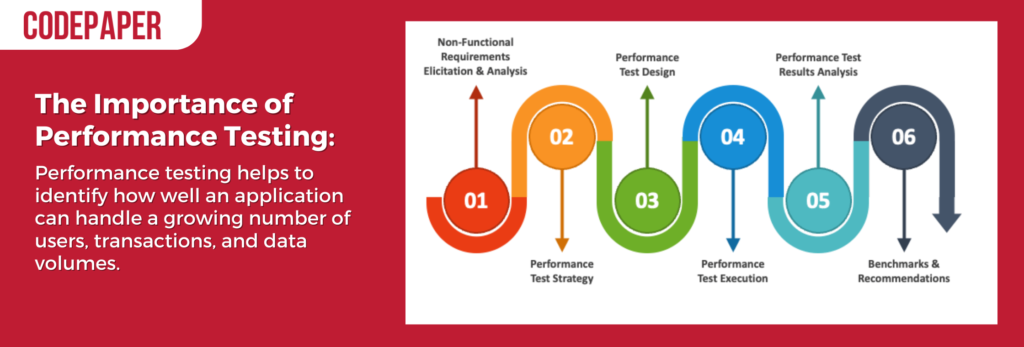
Why Performance Testing Matters
A lag-free, responsive mobile app isn’t just about aesthetics; it impacts revenue, brand image, and customer loyalty. Here’s why performance testing is non-negotiable:
- Improves User Experience: Speed is the first impression. A delay of even 1 second can result in a 7% reduction in conversions.
- Ensures Stability: Catching bugs and crashes before the app reaches users saves reputation and resources.
- Supports Scalability: Can your app handle 10,000 users? 1 million? Testing ensures you’re prepared.
- Compliance & Security: Performance issues can expose vulnerabilities. Testing ensures compliance with privacy and data protection regulations.
- Reduces Costs: Fixing bugs post-launch is expensive. Performance testing during development saves both time and money. Learn more about performance thresholds from Google’s official Core Web Vitals guidelines.

Key Metrics to Monitor
When testing your app’s performance, these metrics are critical:
Network Latency: Delay caused by data transmission over the network.
Response Time: The time taken for the app to react to a user action.
Load Time: How quickly screens, images, or data load.
Throughput: Amount of data processed over a given period.
Error Rate: Percentage of failed or erroneous operations.
Memory Usage: RAM consumption by the app.
CPU Utilization: How much processor power your app consumes.
Battery Consumption: Impact on device battery life.
Ready to turn your app idea into reality? Look no further! Try Firebase Performance Monitoring for real-time tracking of app performance metrics.
At Codepaper, we take pride in being the leading mobile app development company in Canada. Our team of experienced and dedicated developers is committed to delivering top-notch mobile app solutions tailored to meet your unique business objectives.
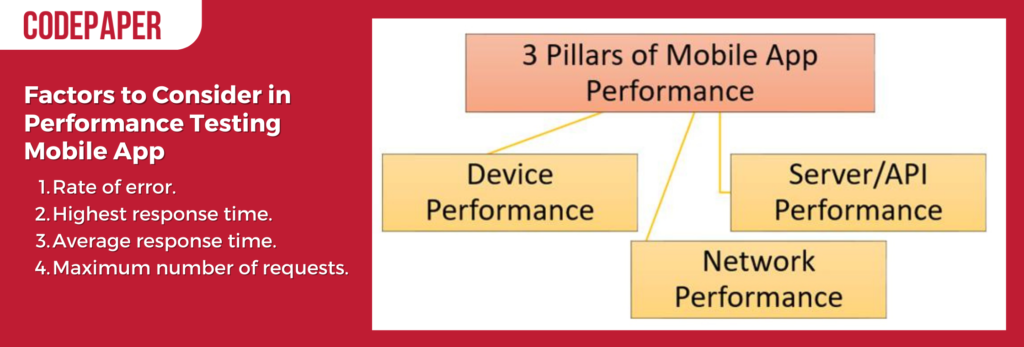
Types of Performance Testing
1. Load Testing
Simulates a high number of concurrent users to assess the app’s response. Ensures your backend can handle user traffic.
2. Stress Testing
Pushes the app to its breaking point to test its behavior under extreme conditions.
3. Spike Testing
Tests how well the app handles sudden, sharp increases in traffic.
4. Soak Testing
Runs the app for prolonged periods to identify memory leaks, performance degradation, or crashes over time.
5. Compatibility Testing
Verifies performance across various devices, screen sizes, OS versions, and hardware capabilities. Learn how we boost app efficiency with AI automation tools at Codepaper.
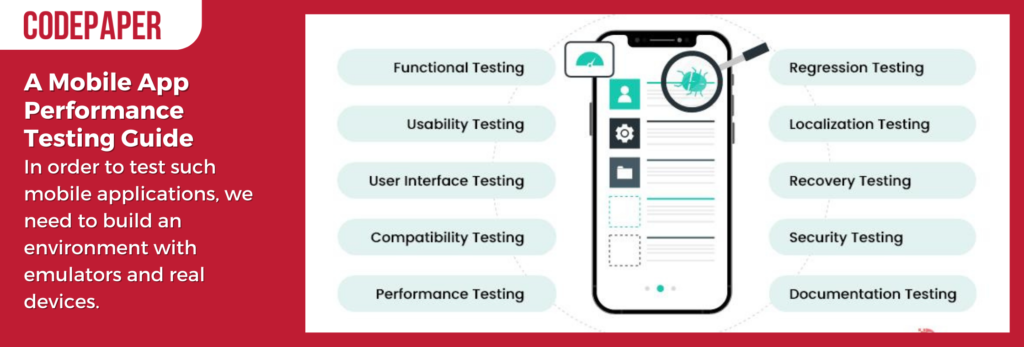
Performance Testing Process at Codepaper
Step 1: Define Performance Goals
We start by understanding client expectations. What’s the desired load time? How many users should the app support simultaneously? What is the acceptable crash rate?
Step 2: Identify Key Metrics
Our QA team defines relevant KPIs, such as response time, CPU load, memory usage, and battery consumption.
Step 3: Set Up Test Environment
We replicate real-world conditions by using multiple devices, networks (Wi-Fi, 4G, 5G, 3G), and regions.
Step 4: Choose Tools
We select the right performance testing tools:
New Relic, Dynatrace – Advanced APM tools
Apache JMeter – Load testing
Firebase Performance Monitoring – Real-time insights
Appium – Automated mobile testing
Android Profiler / Xcode Instruments – Device performance analysis
Step 5: Run Tests
We execute a combination of automated and manual tests, simulating user behavior and varying traffic loads.
Step 6: Analyze Results
Post-testing, we compare metrics against performance goals and generate detailed reports outlining bottlenecks.
Step 7: Optimize
We collaborate with developers to fine-tune the code, improve server response, optimize APIs, and reduce resource consumption.
Step 8: Retest
After optimization, we rerun tests to ensure performance goals are met. You can automate performance tests using tools like Appium or Espresso.
If you’re building performance-optimized mobile apps from scratch, explore our custom software development services.

Best Practices in Mobile App Performance Testing
- Involve Developers Early: Performance testing should start in parallel with development, not after.
- Test on Real Devices: Emulators don’t accurately represent real-world behavior.
- Automate Where Possible: Use CI/CD pipelines to integrate performance testing into your development process.
- Test Under Varying Network Conditions: Use tools like Network Link Conditioner or Charles Proxy to simulate 2G, 3G, and low-signal conditions.
- Track and Log Everything: Maintain a record of all test data to compare future releases.
- Focus on End-User Experience: Performance isn’t just about speed; it’s about how users perceive the app.
To streamline app deployment and performance monitoring, check out our DevOps consulting services.
Common Mistakes to Avoid
- Poor Test Planning: Jumping into testing without goals results in wasted effort.
- Ideal Test Conditions Only: Real users aren’t always on fast networks or new phones.
- Neglecting Low-End Devices: Many users have budget phones—don’t alienate them.
- No Regression Testing: One optimization may affect another area; always test again.
- Ignoring Background Processes: Apps don’t run in a vacuum—test with other apps active too.
Read more about Codepaper’s mobile app development processhttps://codepaper.com/services/mobile-app-development-company/ to understand our approach to performance-first design.
Test Cases We Implement
- App launch under airplane mode
- Battery usage after 60 minutes
- Handling push notifications during a heavy load
- Switching between Wi-Fi and mobile data
- Interruption handling (calls, texts during app use)
- Navigation speed through all screens
- CPU/memory profiling under multitasking
- Latency with high-resolution media files
- Compatibility with dark/light mode
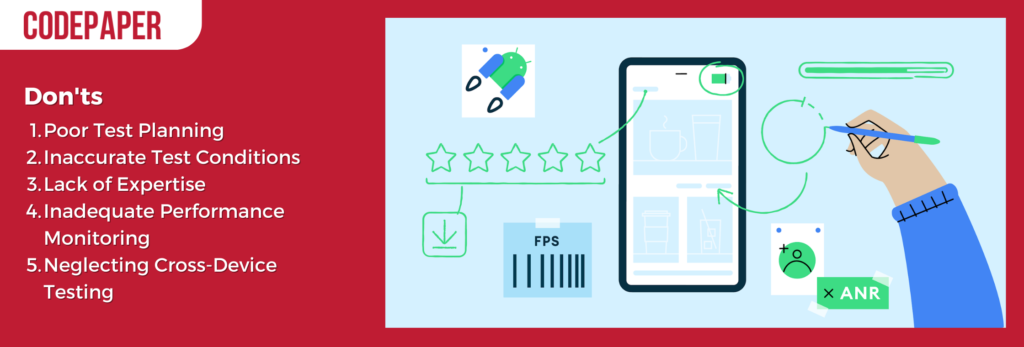
Tools We Recommend
- Firebase Performance Monitoring
- Apptim
- TestFairy
- Kobiton
- LoadNinja
- BlazeMeter
Real-World Impact
One of our recent clients, a fintech app in North America, saw:
User retention improved by 26%
Crash rate drop by 93%* after optimization*
Load time reduced from 4.7s to 1.6s
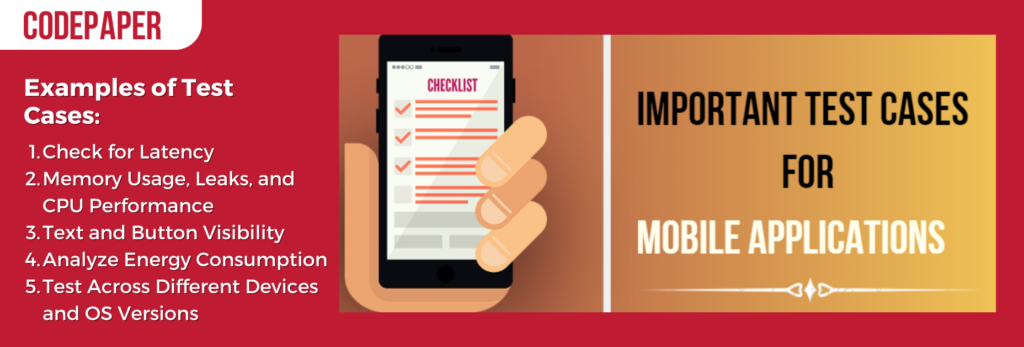
FAQs
Q1: How often should performance testing be done? A: Ideally during development, before release, and after each major update.
Q2: Can performance testing help with app store rankings? A: Yes. Better performance leads to better reviews and higher rankings.
Q3: Is real device testing mandatory? A: Highly recommended. Simulators can’t match real-world performance.
Q4: What causes most app crashes? A: Memory leaks, network timeouts, API failures, and unhandled edge cases.
Q5: Can you test without code changes? A: Yes. Performance testing can be done externally using monitoring and profiling tools.
Conclusion
Performance testing is a fundamental part of mobile app development. It not only ensures functionality but guarantees a smooth, enjoyable experience for users. At Codepaper, we focus on creating fast, stable, and reliable apps that scale effortlessly across devices and geographies.
Looking to build a high-performing mobile app? Get in touch with our experts today.
